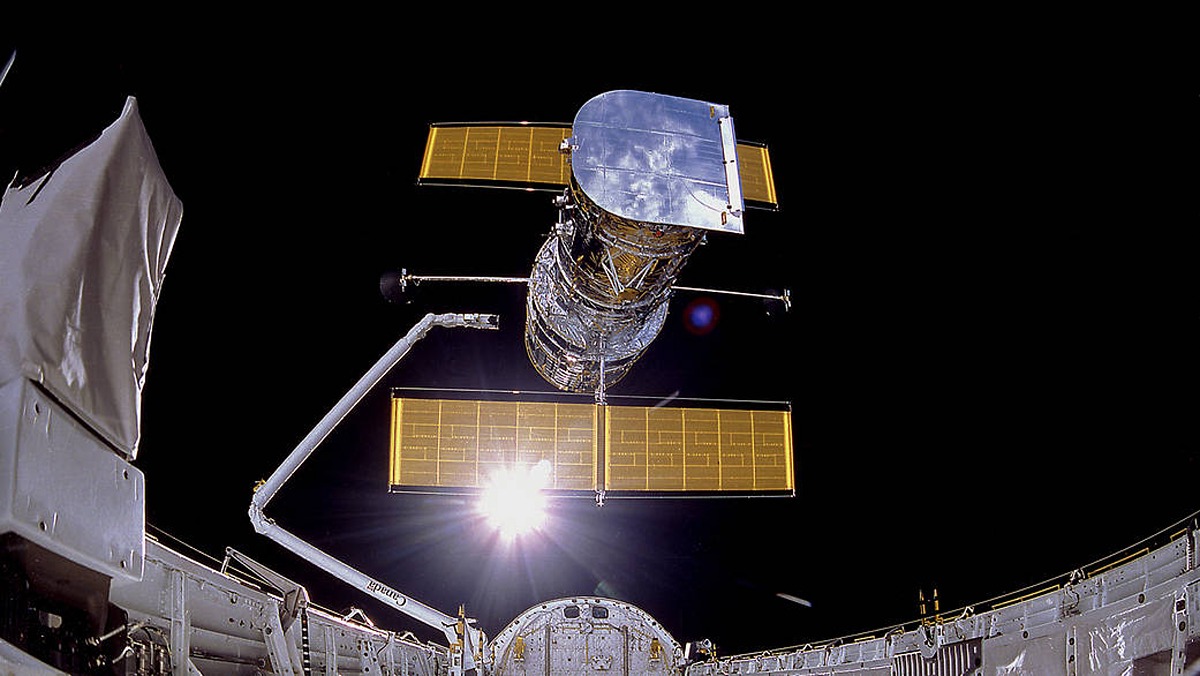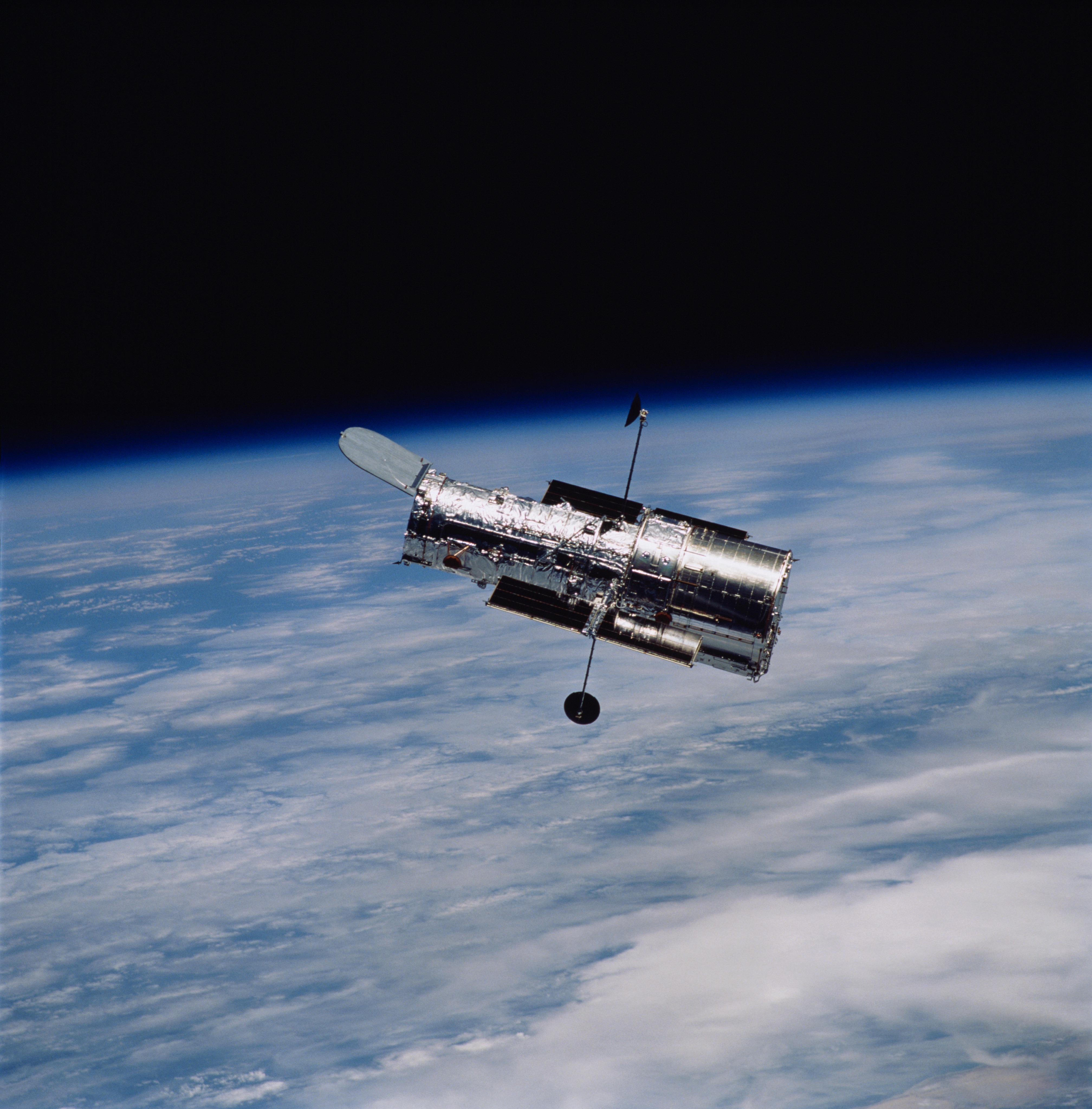New private plan to rescue Hubble Space Telescope may also target space junk
But one of the startups in the proposal is low on cash.

A private consortium wants to help extend the Hubble Space Telescope's lifetime, while cleaning up orbital debris in the neighborhood as well.
Space startups Momentus and Astroscale sent a proposal to NASA after the agency issued a request for information in December 2022 regarding a non-exclusive SpaceX study announced in September. (SpaceX's unfunded proposal is examining options to put the 33-year-old Hubble Space Telescope in a "reboosted" higher orbit, but other companies are allowed to put their own ideas forward, too.)
"We found our product suites to be synergistic in support of a major NASA mission," Momentus CEO John Rood said in a May 9 statement. Momentus, however, has a "dangerously low cash reserve" as of its first quarter financial results on May 11, according to Payload Space. It was only two days before the results were released that Momentus made its joint Hubble proposal public with Astroscale.
Related: The best Hubble Space Telescope images of all time
The startups have considerable space experience. Astroscale, founded in 2013, launched the space debris demonstration mission ELSA-d in March 2021. The mission aimed to test junk capture technology using a simulated piece of debris; the test was halted in May 2022 due to "anomalous spacecraft conditions." Astroscale plans another effort in 2024.
Momentus, which started operations in 2017, has launched several demonstration flights of a space tug called Vigoride aboard SpaceX rideshare missions. The Astroscale-Momentus proposal for Hubble would also use Vigoride, which would launch on a yet-to-be-determined rocket. After the tug reaches space, it would use Astroscale technology for rendezvous, proximity operations and docking to reach the telescope. Vigoride would eventually move Hubble's orbit up by 31 miles (50 kilometers), then turn to a new task of cleaning up orbital debris in the vicinity of Hubble.
Momentus, however, is spending roughly $8 million a month and has just $40 million of cash on hand, its quarterly results showed; while cash flow is coming in from several service agreements and the U.S. Space Force, spending is roughly equivalent to five months of runway, according to Payload. The market capitalization of Momentus is also $40 million, so Payload's report said fundraising for more cash "will be a challenge."
Breaking space news, the latest updates on rocket launches, skywatching events and more!
A further issue arose in March, when the Nasdaq gave Momentus a delisting warning, as the space startup's shares have declined below $1 each, according to CNBC. Momentus has about 180 days, until late September, to bring up its share price again.
Related: Silicon Valley Bank collapse ripples across space industry
Hubble flew to space in April 1990 aboard the space shuttle Discovery. Its altitude — 335 miles (540 km) above Earth as of late 2022 — is now roughly 38 miles (60 km) lower than its initial orbit. Hubble continues to fall gradually thanks to drag induced by Earth's atmosphere, which is whisker-thin, but not non-existent, so high up.
Hubble remains in good health otherwise, thanks to five space shuttle missions to service the telescope and boost its orbit, the last of which happened in 2009. NASA retired the 30-year-old shuttle fleet in 2011, leaving no current servicing options.
Hubble's groundbreaking research has brought in a Nobel Prize and thousands of peer-reviewed papers. Now it is working alongside the even more powerful NASA James Webb Space Telescope to uncover detailed information about our solar system and the deep universe. Webb launched in 2021 and is now operating in deep space to look even further back in time than Hubble's pioneering "deep field" studies showing early galaxy evolution.
At its current altitude close to Earth, Hubble has a 50% probability of falling back to our planet in 2037, Patrick Crouse, Hubble project manager at NASA's Goddard Space Flight Center in Maryland, said during a September 2022 briefing. The press conference was discussing the SpaceX proposal, being conducted under an unfunded Space Act Agreement with NASA.
Related: How are Hubble Space Telescope images made?
To be clear, there is no approved Hubble rescue mission yet. Any such effort would happen at no cost to NASA, per the terms of the agreement discussed in September 2022.
SpaceX's Hubble effort would be in conjunction with the Polaris Program. Polaris is a private program of space missions, funded by billionaire Jared Isaacman, aiming to fly Isaacman and other commercial astronauts he selects using SpaceX's Dragon and Starship vehicles. (The first of the trio of missions, Polaris Dawn, will launch no earlier than September this year; Isaacman first flew to space on another SpaceX mission he funded, called Inspiration4, in September 2021.)
"We're going to be looking at Dragon capabilities and how they would need to be modified in order to safely rendezvous and dock with Hubble," Jessica Jensen, vice president of customer operations and integration at SpaceX, said during the September 2022 briefing. "Details of exactly physically how that's done, and how we also safely do that from a trajectory point of view — that's all to be worked out."
The SpaceX-Polaris proposal would extend the telescope's lifetime by 20 years, according to a Sunday (May 14) tweet from Isaacman.
SpaceX has been criticized for its Starlink constellation's effects on astronomy, including upon Hubble. In March 2023, a peer-reviewed study in the journal Nature Astronomy found that the probability of finding satellite trails in Hubble images is now 5.9%, compared with 3.7% in 2002. Starlink is a set of 4,000 satellites aiming to bring fast broadband to remote populations on Earth; SpaceX is hoping to send as many as 40,000 Starlinks aloft if the U.S. Federal Communications Commission approves.
NASA is still studying Hubble proposals issued in response to its request for information, which concluded Jan. 24, 2023. Other consortiums may also have made bids. NASA officials have said the studies will be beneficial for future efforts to extend the operating lives of other satellites via refueling operations, boosting their orbits and other potentially cost-saving efforts.
"This study is an exciting example of the innovative approaches NASA is exploring through private-public partnerships," then-associate administrator for the Science Mission Directorate at NASA, Thomas Zurbuchen, said in a December 2022 statement. "As our fleet grows, we want to explore a wide range of opportunities to support the most robust, superlative science missions possible."
At least two other NASA telescopes are being studied for rescue. According to an October 2022 story from IEEE Spectrum, Northrop Grumman has a feasibility study underway for a servicing mission of the Chandra X-ray Observatory, which launched in 1999.
Chandra was assembled by TRW, which is now a part of Northrop Grumman, and Northrop subsidiary SpaceLogistics already services Intelsat communications satellites using space tugs that it calls Mission Extension Vehicles. SpaceLogistics is working on a newer version of the vehicle with a robotic arm on board, which may be able to remotely repair orbiting spacecraft.
A proposal to resurrect NASA's Spitzer Space Telescope, launched in 2003, is also in the works. Space technology company Rhea Space Activity won a $250,000 grant from the U.S. Space Force last week for an early-stage study. Spitzer is quite far from Earth, at roughly two astronomical units (two Earth-sun distances) away; the extreme distance is needed to keep the telescope cool for searching out infrared light (heat radiation).
Partnering with Rhea are several heavyweight financial backers, including the Smithsonian Astrophysical Observatory, Johns Hopkins University Applied Physics Laboratory, Blue Sun Enterprises, and Lockheed Martin. Spitzer was retired in 2020 in favor of Webb, a $10 billion observatory that NASA prioritized over some other astrophysics programs to make room as Webb's budget grew beyond expectations.
Elizabeth Howell is the co-author of "Why Am I Taller?" (ECW Press, 2022; with Canadian astronaut Dave Williams), a book about space medicine. Follow her on Twitter @howellspace. Follow us on Twitter @Spacedotcom or Facebook.

Elizabeth Howell (she/her), Ph.D., was a staff writer in the spaceflight channel between 2022 and 2024 specializing in Canadian space news. She was contributing writer for Space.com for 10 years from 2012 to 2024. Elizabeth's reporting includes multiple exclusives with the White House, leading world coverage about a lost-and-found space tomato on the International Space Station, witnessing five human spaceflight launches on two continents, flying parabolic, working inside a spacesuit, and participating in a simulated Mars mission. Her latest book, "Why Am I Taller?" (ECW Press, 2022) is co-written with astronaut Dave Williams.



